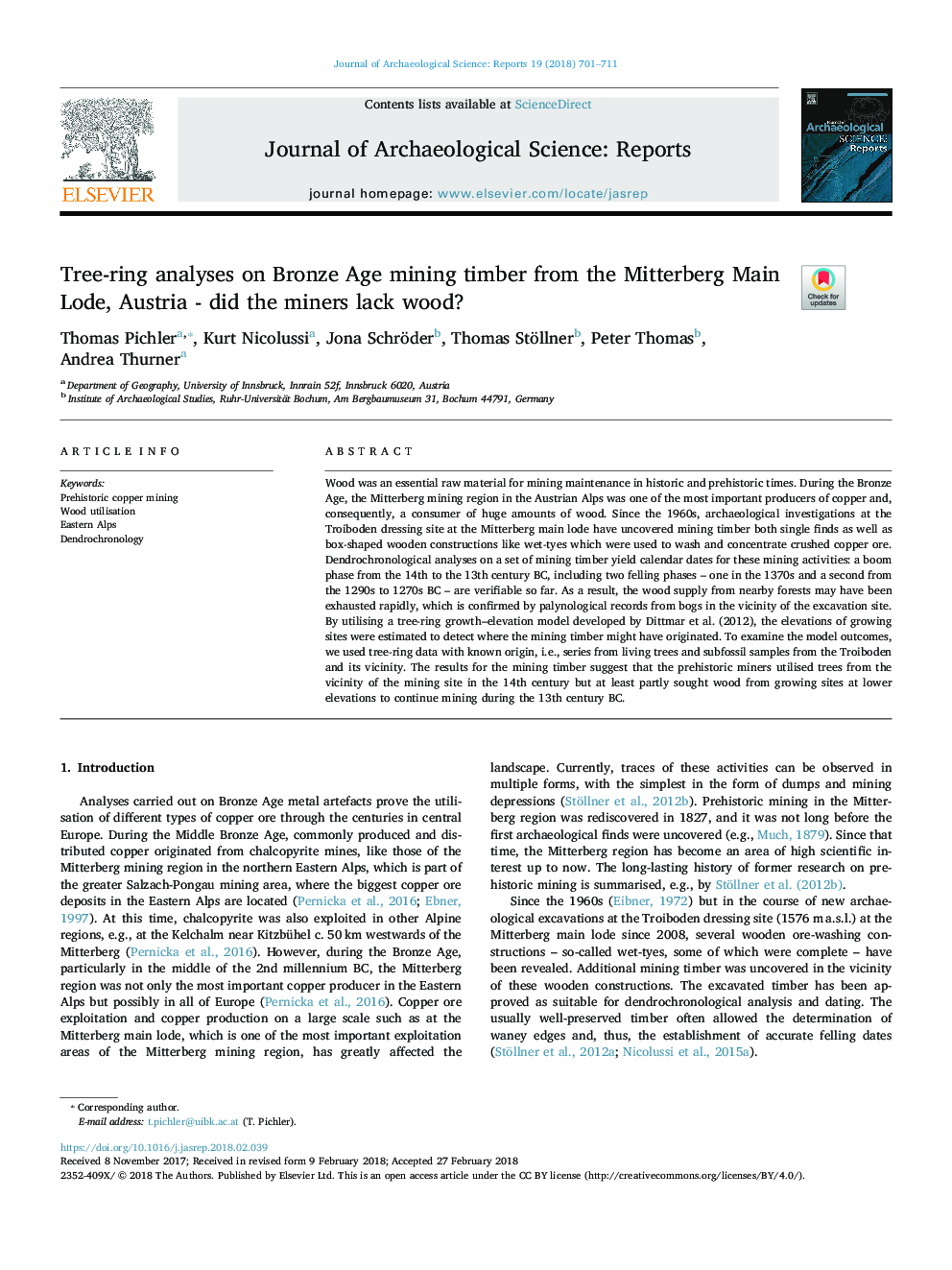| Article ID | Journal | Published Year | Pages | File Type |
|---|---|---|---|---|
| 7444953 | Journal of Archaeological Science: Reports | 2018 | 11 Pages |
Abstract
Wood was an essential raw material for mining maintenance in historic and prehistoric times. During the Bronze Age, the Mitterberg mining region in the Austrian Alps was one of the most important producers of copper and, consequently, a consumer of huge amounts of wood. Since the 1960s, archaeological investigations at the Troiboden dressing site at the Mitterberg main lode have uncovered mining timber both single finds as well as box-shaped wooden constructions like wet-tyes which were used to wash and concentrate crushed copper ore. Dendrochronological analyses on a set of mining timber yield calendar dates for these mining activities: a boom phase from the 14th to the 13th century BC, including two felling phases - one in the 1370s and a second from the 1290s to 1270s BC - are verifiable so far. As a result, the wood supply from nearby forests may have been exhausted rapidly, which is confirmed by palynological records from bogs in the vicinity of the excavation site. By utilising a tree-ring growth-elevation model developed by Dittmar et al. (2012), the elevations of growing sites were estimated to detect where the mining timber might have originated. To examine the model outcomes, we used tree-ring data with known origin, i.e., series from living trees and subfossil samples from the Troiboden and its vicinity. The results for the mining timber suggest that the prehistoric miners utilised trees from the vicinity of the mining site in the 14th century but at least partly sought wood from growing sites at lower elevations to continue mining during the 13th century BC.
Keywords
Related Topics
Social Sciences and Humanities
Arts and Humanities
History
Authors
Thomas Pichler, Kurt Nicolussi, Jona Schröder, Thomas Stöllner, Peter Thomas, Andrea Thurner,
